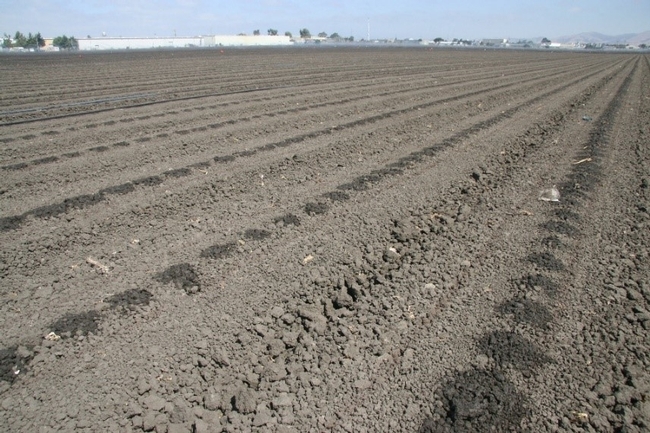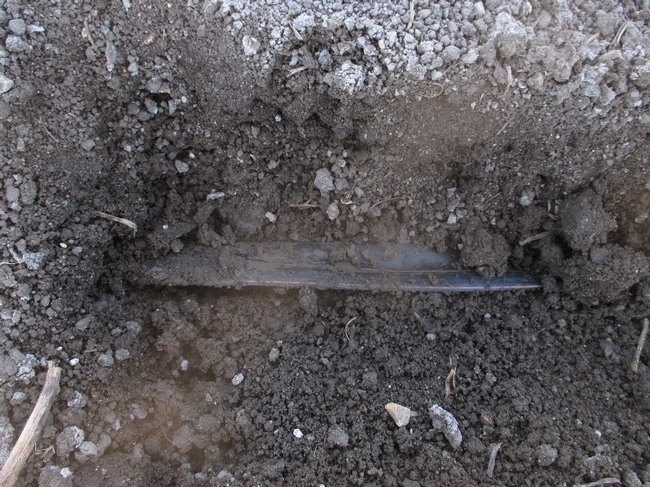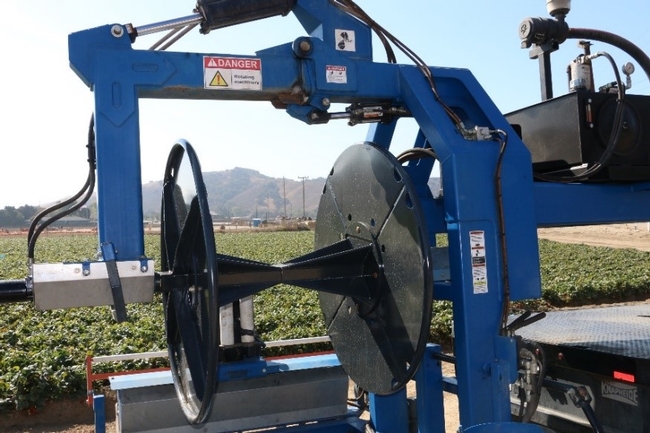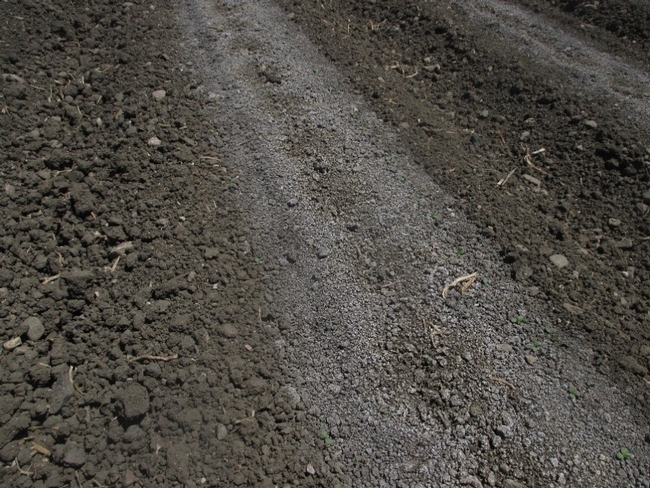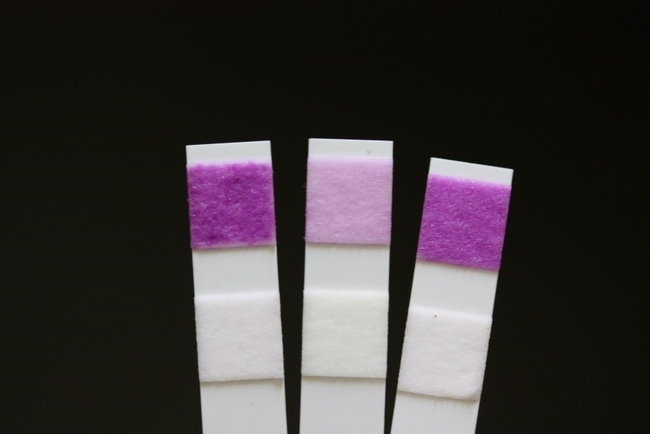During the past two years acreage of season-long drip in lettuce has increased rapidly in the Salinas and adjacent valleys. Using drip for the entire crop cycle allows growers to germinate seeded crops with buried tape (Photo 1), and eliminates labor needed for installing and removing sprinklers. The rapid expansion of this irrigation practice is due to 1) reliable thin-walled single-use drip tape which assures high application uniformity for less cost than thick walled tape; 2) Better injection equipment that can uniformly place drip tape 2-3 inches below the soil surface allowing cultivation without damaging the tape (Photo 2), and 3) development of tape removal equipment that saves labor and efficiently bundles the tape for recycling (Photo 3). The use of drip for germinating lettuce often can improve the uniformity of stands and save water by eliminating common problems associated with using sprinklers such as emergence patterns caused by wind and crusting of the soil surface. Drip germination works best on light to medium textured soil types such as sandy loams, gravelly sandy loams, loams, and silt loams (e.g. along the river and on the eastside of the Salinas Valley).
Unlike sprinklers which infiltrate water at the soil surface, water applied by buried drip wicks upward keeping herbicides and fertilizers sprayed on the bed tops close to the soil surface. The upward movement of moisture from buried drip tape and subsequent evaporation of water from the bed top yields a net accumulation of salts (including nitrate) near the soil surface (Photo 4). This upward movement of applied materials benefits the preemergent herbicide, Kerb, which is often pushed too deep in the soil by sprinkler applied water at germination. The amount of wetting of the soil surface provided by drip germination is sufficient to set Kerb and keep it in the zone where weed seeds germinate which improves its effectiveness (for more information on this subject go to:https://ucanr.edu/blogs/blogcore/postdetail.cfm?postnum=30847).
Table 1. Total mineral nitrogen (ammonium-N + nitrate-N) in the top 6 inches of soil. May 22 – prior to thinning; three subsequent sampling dates following application of 28-0-0-5 fertilizer by an autothinner
Since growers must report the total nitrogen applied to vegetables to the Regional Water Quality Control Board (RWQCB), the nitrogen remaining on the soil surface creates a problem. For instance, a typical application of 20 gallons of 14-0-0-5 contains 29 lbs of nitrogen/acre. This nitrogen is reported to the RWQCB but does not necessarily provide nitrogen for crop growth. More nitrogen would need to be added to keep up with the N demand of the crop. It would be advantageous to use materials in the autothinners that contain no or low amounts of nitrogen.
High levels of nitrogen on the surface also creates a challenge for collecting an accurate soil sample for determining plant-available nitrogen using the nitrate quick test or laboratory analysis. Photo 5 shows the results of three measurements: 1) high levels of nitrate-nitrogen found in the top 2 inches of soil (test strip on the left); 2) moderate amount of nitrate-nitrogen found in the 2 to12 inch layer (top 2 inches scraped off, test strip in the middle); and 3) high levels of nitrate-nitrogen found in the top 12 inches of soil (top 2-inches of soil is not scraped away, test strip on the right). We have always recommended scraping the dry surface soil away before collecting a soil core (see https://ucanr.edu/blogs/blogcore/postdetail.cfm?postnum=4406), however, the extremely high amounts of nitrate-nitrogen in the top 2 inches of drip irrigated fields that are autothinned with a nitrogen fertilizer makes this practices particularly critical in order to not over estimate the amount of plant-available nitrogen in the soil when making critical fertilizer application decisions.
Summary:
- Season-long use of buried drip keeps herbicides and soil applied fertilizers (from anti-crustants and automated thinners) close to the surface due to the water wicking upward.
- Surface applied fertilizers remain in the top 2 inches of soil and are not plant available for much of the season. Ideally, a zero or low nitrogen containing thinning chemical would avoid this issue.
- It is important to scrape away the top two inches of soil when collecting samples for nitrate testing in order to not over estimate the amount of plant-available nitrogen when making fertilizer application decisions.
This article was originally published in Salinas Valley Agriculture.
